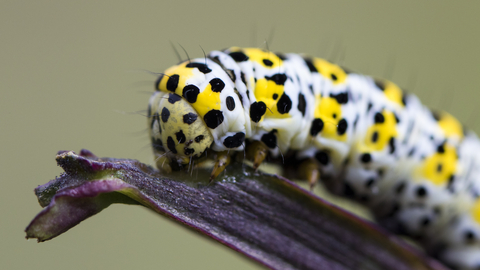
Mullein moth caterpillar ©Chris Lawrence
Mullein
Scientific name: Cucullia verbasci
You're more likely to see the attractive, brightly coloured caterpillars than the mullein moth itself.
Species information
Category
Statistics
Wingspan: 45-50mmConservation status
Common
When to see
Adult: April to MayCaterpillar: May to July
About
The mullein is a nocturnal moth that can be found in a range of open habitats, particularly in places with chalky soils that have recently been disturbed. Adult moths are brown and easily overlooked whilst resting, as they look just like a piece of dead plant stem. They fly at night, in April and May, when they are sometimes attracted to lights.The caterpillars are much easier to spot, as they're brightly coloured and feed out in the open, both during the day and at night. They feed on mulleins, particularly great mullein, but will eat the leaves of other plants, including garden buddleias. They spend the winter as a pupa, in a strong cocoon in the ground. They have been known to spend up to five winters in this state before emerging.
How to identify
The mullein moth is patterned in subtle streaks of brown and buff, with a ragged border to the wings and a tuft above the head to help break up its outline. All of this lets it camouflage perfectly as a piece of dead plant stem as it rests during the day.The caterpillar is a whitish colour with regular yellow patches and black dots.
